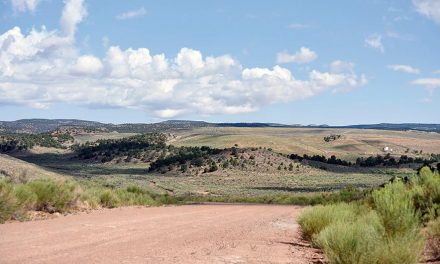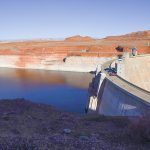
50 years ago: Officials criticize CBS documentary
As Sarah Ann Johnson, the former Miss Navajo and current Miss Indian America, continued her tour back east promoting a CBS documentary on Indian America, officials here on the Navajo Reservation were sharply criticizing the program.
Perry Allen, director of the tribe’s public relations department, said the program gave the wrong impression of what the Navajo people were like. The program only spent about six minutes talking about the Navajos but almost all of that time, said Allen, was about the low poverty level on the reservation and gave the impression that most Navajos were drunks.
“It gave the impression that we are so far down in the dirt that we can’t get back up,” he said, adding that this program was watched by so many people that it could take the tribe decades to reverse the image of the Navajos portrayed in the documentary.
The documentary, he said, kept stressing that the only money the tribe received was from the federal government and that the tribe was forever “begging for a handout.” There was no mention, he said, of efforts by the current administration to bring more jobs to the reservation nor did it even mention the tribal government that much at all.
“There’s no way I can erase the memory of that show from my mind,” Allen said. He said the CBS crew that filmed on the reservation made no attempt to talk to tribal officials. Instead, as most off-reservation media did, they came on the reservation with their views of the Navajo already in place and filmed what they needed to reinforce that image.
The tribe did not ask for an apology, he said, because the damage had already been done.
Not all went on Long Walk
In other news, as the tribe continued its plans to do a re-enactment of the Long Walk in June as part of its celebration of the 100th anniversary, Harold Drake said he and other members of his Low Mountain Chapter, did not plan to get involved. The reason, he said, is quite simple. No members of his chapter went on the Long Walk because the soldiers never made it that far west in their efforts to capture Navajos. And while chapter officials have complained that they are ignored by the tribal government because of they are remote, that remoteness allowed members of the chapter to stay at home while thousands of other Navajos were transported to federal camps around Fort Sumner.
In fact, said the Navajo Times, thousands of Navajos avoided being captured by Kit Carson because the U.S. Army didn’t know exactly where all of the Navajo people were living and hiding. They missed hundreds of families in the Low Mountain and Piñon areas of the reservation as well as many more that lived in the area around the San Francisco Peaks.
One theory by historians was that the army may have thought that Navajos living west and south of Chinle were Hopis and therefore not part of their operations. Given this, however, Navajo officials began encouraging tribal members from all areas of the reservation to take part in the celebration to show solidarity to those families that did take part in the Long Walk.
A stranded Navajo needed help
It’s now been about three months since that monumental snow fall created havoc on the reservation but people are still talking about it, said Dick Hardwick, general manager of the Times.
He said New Mexico Gov. David Cargo gave a speech earlier this week in Farmington and mentioned something he saw as he was traveling in a helicopter providing food and supplies to stranded Navajos in the Eastern Navajo Agency.
As his helicopter was coming back from one of its trips, he said that he saw that a Navajo family had spelled out – in huge letters – HELP in the snow so the helicopter landed next to the hogan to see what the family needed. “As we landed, I saw a Navajo man come out and race up to the helicopter with a camera in his hand,” Cargo said. “When he got near us, he took a picture, turned around and race back into his hogan and never came back out.”
Hardwick said he thought about this as he listened to the rest of Cargo’s speech and came to the conclusion that the Navajo needed help to get a photo of a helicopter.
Native population of San Francisco
Officials in San Francisco put out a press release this week saying that an informal census of the city revealed that there were more than 10,000 Native Americans living within the city limits.
They noted, through surveys, that some 147 tribes were represented among the Native population with most coming from tribes located in California. Of the tribe’s not located in California, the Navajos came in first with more than 1,000 members scattered around the city with many of them attending colleges and universities in the San Francisco area.
The press release noted that there were at least 12 major organizations representing various aspects of Native culture and that for the past several years, these groups has sponsored powwows and festivals that were attended by thousands of non-Indians.
To read the full article, pick up your copy of the Navajo Times at your nearest newsstand Thursday mornings!
Are you a digital subscriber? Read the most recent three weeks of stories by logging in to your online account.







 Highway 264,
Highway 264, I-40, WB @ Winslow
I-40, WB @ Winslow